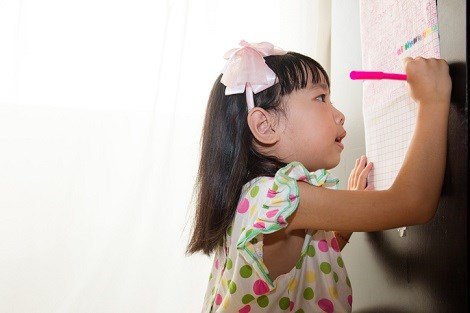Starting the Year with some R&R
The New Year is a common time to reflect and make resolutions. In his first post of 2018, MET's resident blogger David Dodgson guides us through his process of reflecting on his teaching and development in 2017, and using those reflections to inform goals and ideas for 2018.
The New Year is a traditional period for reflection and resolution as we look back on the year that was and make plans and decisions about the year ahead. It is also a tradition that many of these intentions end up either forgotten within a couple of months, or (even worse) nag at the back of our minds for most of the year.
In my experience, this comes about because the resolutions are formed from generic reflections and lack structure. With a vague goal in mind (‘do more sport’ being a common one for me) and no clear idea of how to get there, it is no surprise that the good intentions do not amount to much.
The same can be true of our teaching reflections. Brief reflections can lead to well-intentioned but unclear goals for improvement. Using a simple structure can help guide us into better reflections and inform more realistic resolutions, and that is what I will share with you in this first post of 2018.

3-2-1
Catchy names always help! When looking back on my own teaching, whether that be at the end of a year, a term, or a busy week, I use the following guide:
- 3 things that went well
- 2 things that could have gone better
- 1 new thing I want to try
Looking back on 2017, my 3-2-1 goes like this:
3 Things that Went Well
There is sometimes a tendency when reflecting or giving/receiving feedback on our teaching to focus on the negative. There may be a positive comment dropped in the middle as a sweetener but the overall impression is ‘must try harder’. By giving the better side more of a spotlight, we can give ourselves a deserved pat on the back and build more confidence.
- My First IATEFL Talk
This was a long-standing ambition that I realised last year – the opportunity to deliver a talk at the biggest ELT conference there is. I was lucky enough to be selected as a scholarship winner by LTSIG and spoke about the research I have done into teacher reflection for both my MA and Dip TESOL studies. Taking the time to revisit that research and condense it into an informative talk with practical suggestions was a task that proved very useful for me personally, acting as a reminder of the importance of reflection in our professional lives.
And, of course, IATEFL itself was an intense and enjoyable experience with plenty of great talks to attend and fellow ELT professionals to catch up with, including MET’s own Robert McLarty, who I got to meet in person for the first time.
- Differentiated lesson aims
Changing focus to the classroom now, I developed a much better understanding of producing targeted lesson aims this year. In the past, I would always aim for a single, catch-all aim at the top of my plan, but in recent months, I have started to produce more comprehensive aims that cater to all students in the class. This has come about in part due to mentoring colleagues who are taking the DELTA as I put my own advice for them into practice. I not only consider the overall outcome and target language needed but I also indicate how my students will be able to show me they have achieved the aim. Finally, I have started to include ‘levels’ with my aims to allow for differentiation, ‘Level 1’ being the minimum expectation I have for my students, and levels 2 and 3 being like ‘stretch goals’ that I can use to demand more from my fast finishers and confident achievers (I sense a future blog topic coming on here!)
- Exploring spaces
Another development in my classroom practice this year has been the use of the physical space the lesson takes place in. I have been experimenting with new ways to get my students out of their seats to provide variety in interactions and encourage student-centred learning. One simple example of how I have done this through putting answer keys on the walls. This means that instead of me going over answers at the board with students volunteering answers one at a time, the students are up on their feet, self-checking and self-correcting – a teacher-fronted activity is suddenly more student-centred. Another ‘on the wall’ idea that has become a regular part of my class routine is the blank poster. I have started putting these up at the start of lessons and using them to capture lexis that emerges during the class, or having students brainstorm ideas or review new language on them. These are great as a reference for the duration of the lesson and beyond.
2 Things that Could Have Gone Better
It’s not all been good, of course. Teaching a group of learners is such a dynamic process that there will always be ideas that don’t work as well as expected and moments that just don’t click. There are two key things to do in such cases – identify the problem, and think of ways to address it in the future.
- The Same Old Tech
ICT generally features in my lesson when it supports learning aims and/or facilitates an activity that would be more difficult otherwise. Examples of how I use technology include Quizlet for introducing/revising vocabulary, Kahoot for students to design their own quizzes, Padlet for collecting ideas and short pieces of writing, voice recorders for speaking practice, and many others. These activities, however, are ones I have been using for quite some time now and it has been a while since I have added something new. Now, we do not have to keep adding new activities to our classes, of course, but there is considerable value in experimenting with things. This allows us the chance to engage in a process of inquiry by trialling, analysing, and reflecting on a particular tool’s usefulness. Over the last year, I have been recycling similar apps and activities. While they work well, it is time I challenged myself by trying something different and assessing its effectiveness.
- Engaging Young Learners
Classroom management is a tricky talent to get right. Each class is unique; with some we have to adapt our strategies and with some classes, it takes more time than with others to establish routines and encourage motivation. One struggle for me with my young learner classes in the latter part of 2017 was keeping their attention. Two of my classes in particular were very chatty and while I liked their energy, there were times when I just could not get everyone to settle down and listen. I tried various strategies such as a team point system with rewards and sanctions, frequent reminders of class rules, stopping activities and waiting … but the effect was usually temporary. Part of the issue is undoubtedly connected to the personality of each group and my need to further adapt my approach in order to engage them. Another part of the issue is related to the above – familiar, routine activities can be useful in the young learner classroom but they can also have a negative side. Variety is also needed to re-engage the learners so I need to introduce some changes…

So, thinking about the year ahead:
1 New Thing I Want to Try
- New Realities
As we all know, technology develops at a pace that is hard to keep up with so I would like to try out some creative ideas I saw in Joe Dale's Ipad workshop at IATEFL (thus bringing this reflective cycle full circle). He showed us a number of creative apps to immerse learners in projects through avatars, animations, and backdrops. In this New Year, I am planning to try My Talking Avatar, MSQRD, and Yakit Kids to animate photos and add voiceovers. These apps potentially offer an avenue for students to get creative and engage in role-play. They allow students to personalise their language production without putting them personally on the spot. The opportunity to directly produce something instead of working through a pre-made Quizlet or Kahoot or adding to a shared Padlet board will hopefully engage them both in production and viewing each other’s creations. As ever, I will be reflecting on the successes and challenges of these activities as I try them.
Over to You…
A reflective exercise for you to review the year that was, or make use of at the end of your current term/course:
- list three things that went well. Think about what made them a success and what impact they had.
- identify two things that did not go so well. Reflect on the reasons, and think about what you will do differently next time.
- think of one new idea that you want to try out in the near future. Give it a go and reflect on how well it worked.
Try this out with your students as well. It is a great way to get them to reflect on their learning and make plans for what they want to improve and how in the future.

How do you reflect on your teaching? And do you have any ‘teaching resolutions for 2018? Share your reflections in the comments below!
Related article:
Taking ownership of a development programme
Roy Edwards looks into teacher-led professional development.
Comments
Write a Comment
Comment Submitted